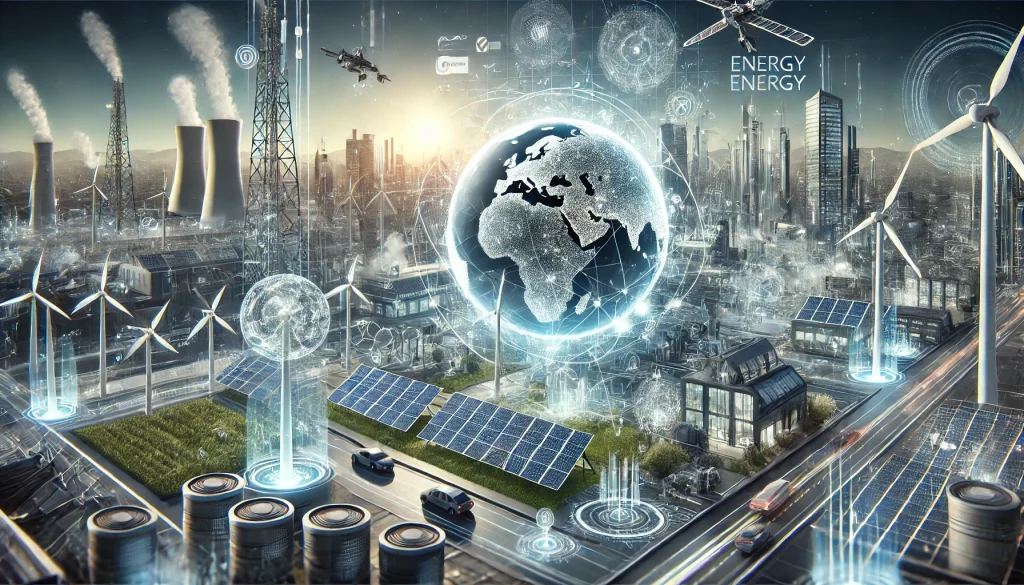In this post, we aim to provide an overview of our outlook on the latest technologies in the UK energy market for 2025. Please note that this represents our personal opinions and expectations; it is not intended as advice or a recommendation to invest in any of the technologies mentioned. Rather, it serves as a reference point to revisit in a year’s time to see which predictions materialize.

Hydrogen and derivatives
As one of the leading nations in the development and adoption of hydrogen technology, the UK is expected to take further significant steps in this area. The government has chosen to support the emerging hydrogen sector through a structured process, selecting projects from qualified bidders. While this is just one of many possible approaches, it appears to offer stability, especially when compared to the relative lull in the global hydrogen market.
By 2025, the winners of the HAR2 government support scheme—providing up to 875 MW of low-carbon hydrogen capacity—are expected to be announced. Additionally, the launch of HAR3 is anticipated, with support for up to 1.5 GW of capacity.
Although hydrogen technology is currently in a post-hype phase, we are optimistic about the potential for exciting advancements and progress in this field, including developments in hydrogen derivatives.
Small Modular Reactors (SMR) and Advance Modular Reactors (AMR)
The UK has taken a leading role in supporting the development of Small Modular Reactors (SMRs). In November 2024, Great Britain Nuclear (GBN) initiated negotiations with four shortlisted bidders for the UK’s SMR Programme, with a final decision expected in the spring of 2025.
This sector warrants close attention, as there is growing interest from IT companies due to the substantial electricity demands of AI and blockchain technologies.
Fusion
The UK has been at the forefront of fusion technology research, with significant advances driven by its universities. In October 2023, the British government unveiled a strategy to support the development of this cutting-edge sector. Following Brexit, the UK is no longer associated with Euratom but has launched its own Fusion for Energy Programme to maintain momentum in this area.
Fusion, an innovative and research-intensive field, aligns well with the UK’s strengths, including its world-class universities and highly skilled workforce. Several companies are actively working to address the technical and technological challenges of fusion. A key milestone was achieved in 2024 with the production of the first 5.5 tonnes of fusion-grade steel, marking a crucial step in the technology’s development.
Additionally, at the end of 2024, the UK and US announced a £40.5 million joint fusion project. Following the closure of the JET project in Oxfordshire, the UK government launched STEP (Spherical Tokamak for Energy Production) at the site of a former coal plant in West Burton. To drive further progress, a new entity, UK Industrial Fusion Solutions Ltd, was established to advance fusion technology and its commercial potential.
Battery Storage (BESS)
The new year marks the beginning of an exciting chapter for decentralized energy technologies. As the UK market continues to explore ways to integrate Battery Energy Storage Systems (BESS) into the energy system, revenue streams for the sector are expected to stabilize. However, there remains significant room for growth in market depth, which may still result in some revenue volatility for participants.
Despite these challenges, the sector is experiencing steady growth, underscored by recent announcements of mega projects planned for Scotland. We anticipate these positive dynamics will continue to drive the sector forward.
Renewable Energy Sources (RES)
The year 2024 was record-breaking for UK wind generation. Together with other renewable energy sources, it accounted for 56% of the country’s electricity generation.
In addition to traditional onshore wind and photovoltaic (PV) installations, as well as offshore wind projects, we can expect continued deployment of new onshore wind and PV projects across the UK. The most exciting developments, however, are likely to come from breakthroughs in floating offshore wind farms, which hold great potential for expanding renewable energy capacity.
Energy Transportation and Transmission
We have included the often-overlooked transmission sector in our outlook due to the revolutionary changes anticipated here. These changes, while less visible, are highly significant.
Energy transmission, particularly electricity, is poised for transformation in two key areas: expanding physical transmission capacity and improving transmission efficiency. The growing volume of renewable energy generation, coupled with the rapid expansion of the BESS sector, is placing considerable pressure on the electricity transmission system, which currently acts as a bottleneck for faster renewable energy deployment. The increasing demand for grid connections underscores the need for significant investment to keep the transmission infrastructure in step with generation growth.
The UK’s reliance on imported electricity—16% of total supply in 2024—introduces an external factor of volatility, especially in the event of disruptions in foreign markets, such as the French energy market.
Additionally, the UK may lead the way in developing a national hydrogen transmission system. Project Union, which aims to construct 1,500 miles of gas pipelines to transport hydrogen from the north to the south of the country, is currently under development. We anticipate further updates on this groundbreaking initiative in 2025.
Artificial intelligence impact on Energy market: creating Demand and Facilitating Change
AI, as a significant consumer of energy, has the potential to drive substantial change across the entire energy market. It is important to recognize that energy generation, transmission, and consumption are highly capital- and material-intensive processes. Despite this, electricity flows are far from optimized, leaving considerable room for improvement.
AI can enhance the balance between energy demand and supply, facilitate the development of new market products for electricity consumers, and improve overall system efficiency. Additionally, AI-driven advancements in productivity can support both large-scale project developments and smaller-scale distributed generation, consumption, and grid management.
We anticipate that AI will play a pivotal role in advancing novel technologies, including but not limited to advanced nuclear reactors, fusion reactors, and other cutting-edge innovations within the energy sector.


Leave a Reply